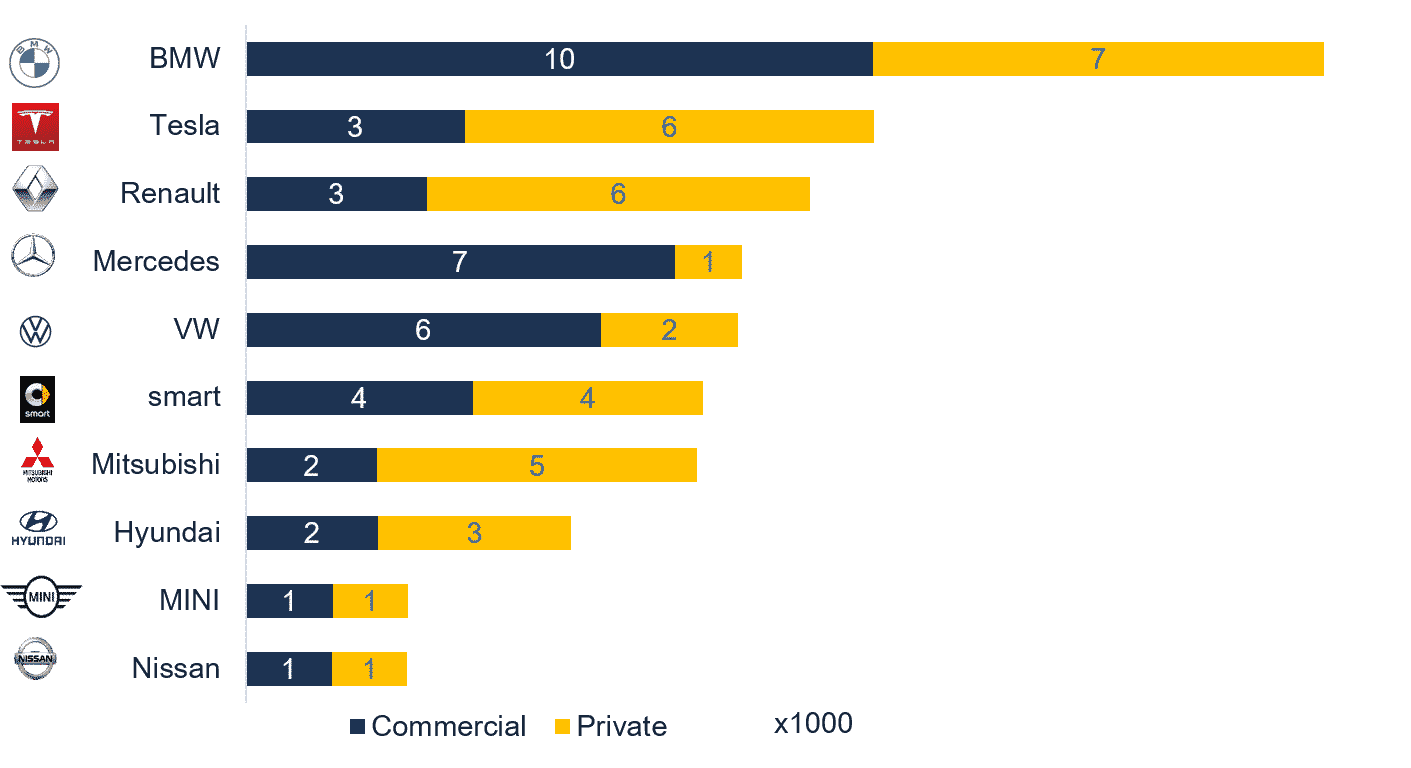On the wings of the German incentive policy, the parc of electric vehicles and plug-ins have grown with 60% from 2019 to 2020. In contrast, the total parc grew with 1.3%. There is still a long way to go to electrification, as the share of Electrical vehicles in the parc stands at 0.3%. Also, in the last 5 years, almost 20% disappeared from the Parc after registration.
Electricity growing, gas dropping
Given the small EV and Plug-in fleet that has been existing, it is no surprise that the parc has been expanding, especially with the incentives in 2019.
The parc of vehicles with a gas installation, has been dropping steadily since 2014. Given the focus on electrified transport by OEM’s and the government, we do not see this trend to turn around soon.
Where does the growth come from?
If we look at the growth per brand, taking in account EV and Plug-in combined, we see that BMW has had the largest increase, which is thanks to their wide variety of electrified products. Registration wise, 2019 has been the best year for the BMW i3 so far, resulting in half of BMW’s parc growth.
One other obvious winner is Tesla at number 2, while we see Renault outperforming the other German brands, at a bit surprising number 3 spot.
There is a clear difference in customer type that is being served depending on the origin of the brand. The German brands have strong fleet footprint, capitalising their strong TCO. The non-European brands have normally a favourable list price, which is more suitable the private buyer.




